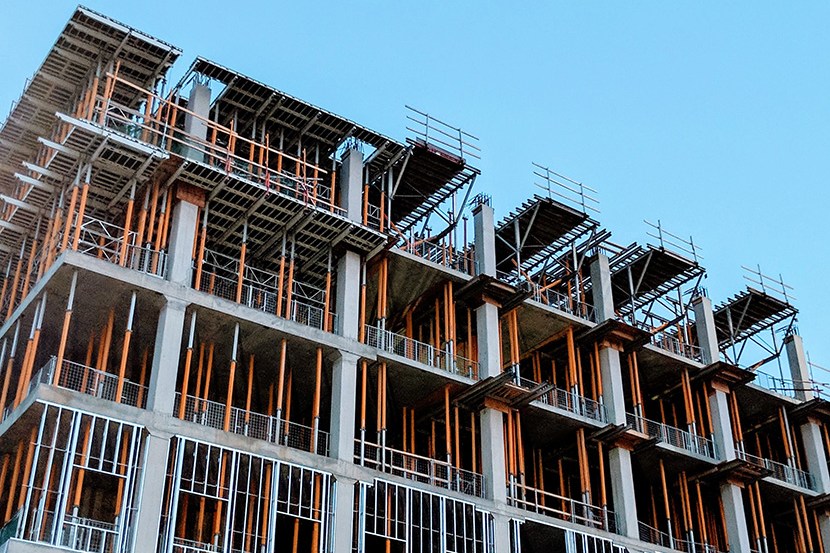
Construction Loan Considerations During a Pandemic

Will Mitchell is co-founder and CEO of Rabbet, a software firm helping real estate developers and lenders efficiently manage construction finances. He spent 10-plus years in commercial real estate and completed his undergraduate studies in architecture and structural engineering from the University of Virginia.
Construction lending calls for a high degree of perseverance and accuracy to mitigate its inherent risks. The COVID-19 pandemic has made business much more difficult and complex.

Bearing this in mind, the focus should shift to what market participants typically review in terms of their construction loans. This should be done not only to ensure the safety and smooth running of the entire process, but it also helps decrease the risk of losses and lawsuits in these troublesome times.
Making Sure Comps Are Reasonable
Assessing a real estate’s value is typically much easier said than done. This is where real estate comparable listings or “comps,” in realtor jargon— come in. Comps are sales records of assets sold in the past several years. Appraisers and brokers use this data to calculate the most precise estimate possible of an asset’s value, and this is something you can do as well. To find comps, you need to look for recent sales of assets as similar to your own property as possible, then compare them to your asset and adjust your price so it can account for the differences.
During the pandemic however, this process has become much more difficult as fewer transactions have occurred due to a growing bid-ask spread. As a result, it is difficult to ascertain the true value of assets in this climate with respect to stabilized value and uncertainty around the future of consumer behavior in certain assets. Being prepared for potential regulatory concerns around stabilized asset value will help assuage concerns for all parties involved.
Making Sure Cap Rates Bear Some Resemblance to a Realistic Projection
Cap rate forecasts are helpful in foreseeing the sales price of a property investment. Such forecasts can be made by dividing the net operating income that the property is expected to produce at the time of sale by the exit cap rate.
A sales price estimate is needed to calculate the anticipated profitability of a property investment and specifically the internal rate of return. Various studies have shown that cap rates move in a countercyclical way in reference to the rent and property value cycle.
If you’re aiming to get a realistic cap rate, using recent sales of comparable properties can be very useful. A good cap rate is one that resulted from similar properties in the same location, while a bad cap rate would be the one based on different property types in different markets. Similar to assessing comps, the cap rate is uncertain in the current environment due to uncertainty of cash flows and a growing risk premium on certain asset types. It is safe to say, however, that cap rates observed from transactions pre-pandemic will be difficult for lenders and regulators to gain confidence around.
Making Sure the Construction Advance Process is Backed With Inspections by Qualified Professionals
The construction advance process is one the most essential elements in construction lending. The choice and engagement of qualified and competent professionals when it comes to this type of activity and assessments is not only a sensible business practice but also a regulatory requirement. Having the entire process carefully inspected by a qualified professional, you can be certain that its progress will be realistically assessed.
This means during the pandemic the quality and frequency of your assessments are of even greater importance. Hiring a highly qualified construction monitoring professional will ensure that the process is being overseen properly. Some of the disruptions experienced over the past year also means that you require additional documentation around schedule or potential change orders than you required previously.
In short: after ensuring comps and cap rates, concerns around the construction process and monitoring are of key concern to market participants including lenders and regulators.
Making Sure Borrowers are Personally Invested in the Business With Cash Upfront
Even pre-pandemic it was common that the borrower invested cash upfront in the project, this is commonly considered to be a solid proof of their financial ability to pay off the loan. This need has only been further amplified during the pandemic as borrowers investment in the asset will determine a part of its quality and their commitment. It is also pertinent to continue to check collateral and cash reserves on hand should the project incur some additional costs.
In that event, lenders will ask for and regulators will be happy to see borrowers continuing to invest more cash in the project as a sign of their continued commitment and belief in the success of the project.
Ensuring Contingencies to Cover Cost Excess and Operating Expenses for at Least a Certain Period
Most construction budgets provide for certain amounts reserved for contingencies. These amounts are directed towards covering reasonable but unforeseen increases in construction costs and operating expenses. In such cases, the increased cost is removed from contingency until the lender will ask that the borrower provide additional capital.
During the pandemic, regulators and lenders are paying closer attention to these contingency and interest reserves as potential additional costs will require the borrower to come out of pocket. A general rule of them is that the contingency should not be further drawn than the project is complete. These project “reserves” are important to ensuring the project has the necessary cash to complete the project.
Tracking Material and Labor Delays on a Project
If there is a delay in the material and labor shipment, it can incur additional expenses for a construction project. For instance, because of delays in the shipment of materials or unfavorable weather, it’s necessary to pay overtime or additional general conditions. As materials are being delayed more than ever due to the pandemic. It is important to ensure that critical path is not impacted due to material availability. Having local alternatives can be helpful in ensuring that projects stay on track.
Pressure Testing for Liquidity Requirements and Need for Outside Capital Intervention
A liquidity pressure (or stress) test is intended for measuring the level of liquidity the borrower must uphold to guarantee an uninterrupted ability to meet financial obligations in stressed circumstances. In consequence, insufficient liquidity leads to the introduction of the outside capital intervention. Pressure testing for liquidity requirements should aim to assess the level of required contingent liquidity and this includes establishing a cash flow model that clearly and accurately measures factors such as interest reserve and contingency availability in the budget. It may also be appropriate to check the developer fee to ensure that it is not being drawn prematurely. This also requires that reviewers pay attention to budget reallocations and adjustments for potential movement of funds from these built-in reserves.
At this moment, regulators have not issued any new guidance regarding construction loan risk management. That said, loan administrators and regulators continue to pay close attention to construction projects during disbursement and regulatory review. This includes not only comps cap rates, but also continuing to assure that qualified professionals are doing thorough inspections.
Some projects continue to have delays caused by materials and lack of labor, producing insufficient liquidity and the need for outside capital intervention. Thus far, the volume has not been noteworthy; however, as 2021 progresses lenders and regulators will gain greater insight into debt serviceability that may lead to additional guidance from lessons learned.
Views expressed in this article do not necessarily reflect policy of the Mortgage Bankers Association, nor do they connote an MBA endorsement of a specific company, product or service. MBA Insights welcomes your submissions. Inquiries can be sent to Mike Sorohan, editor, at msorohan@mba.org; or Michael Tucker, editorial manager, at mtucker@mba.org.
